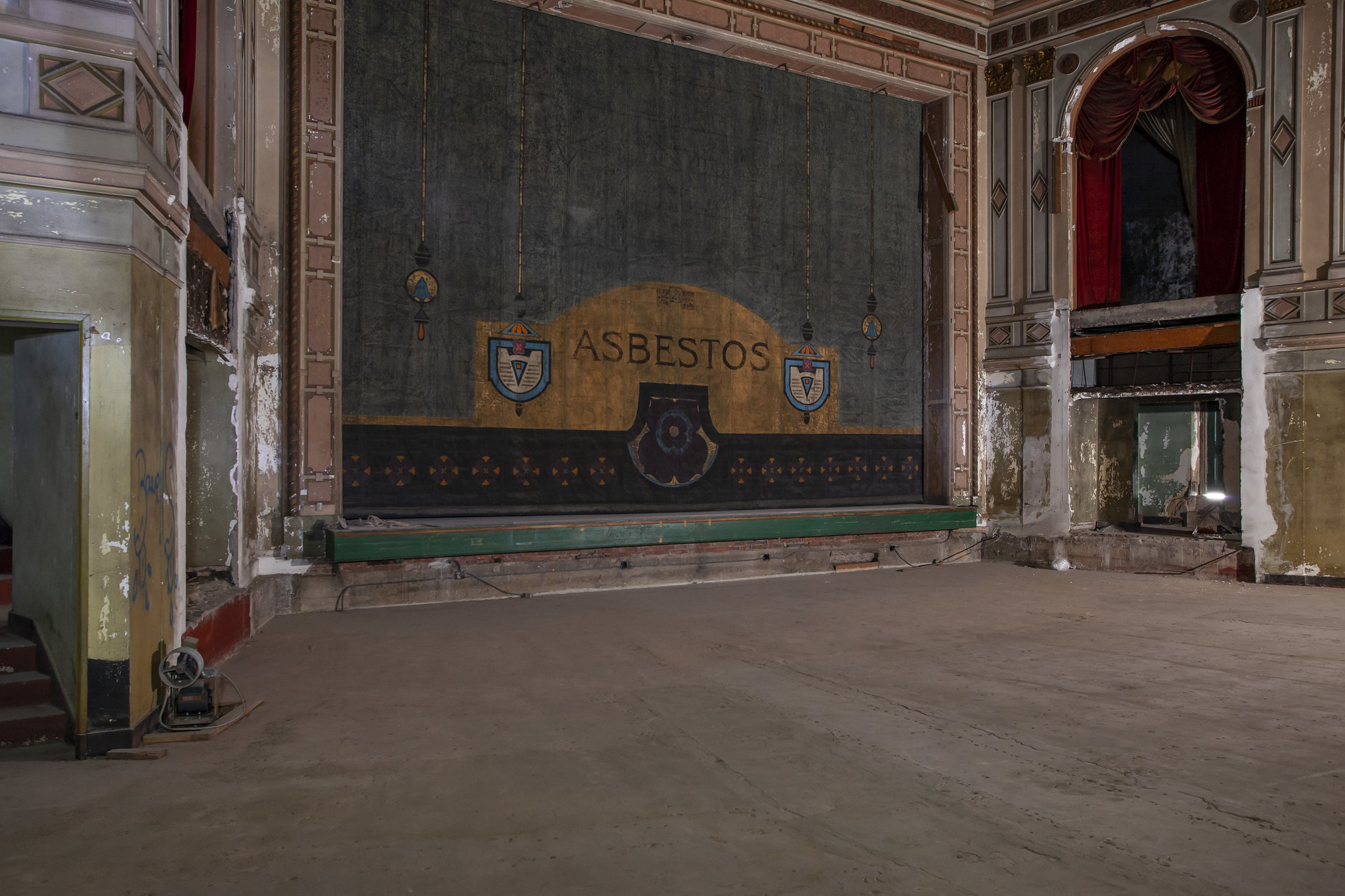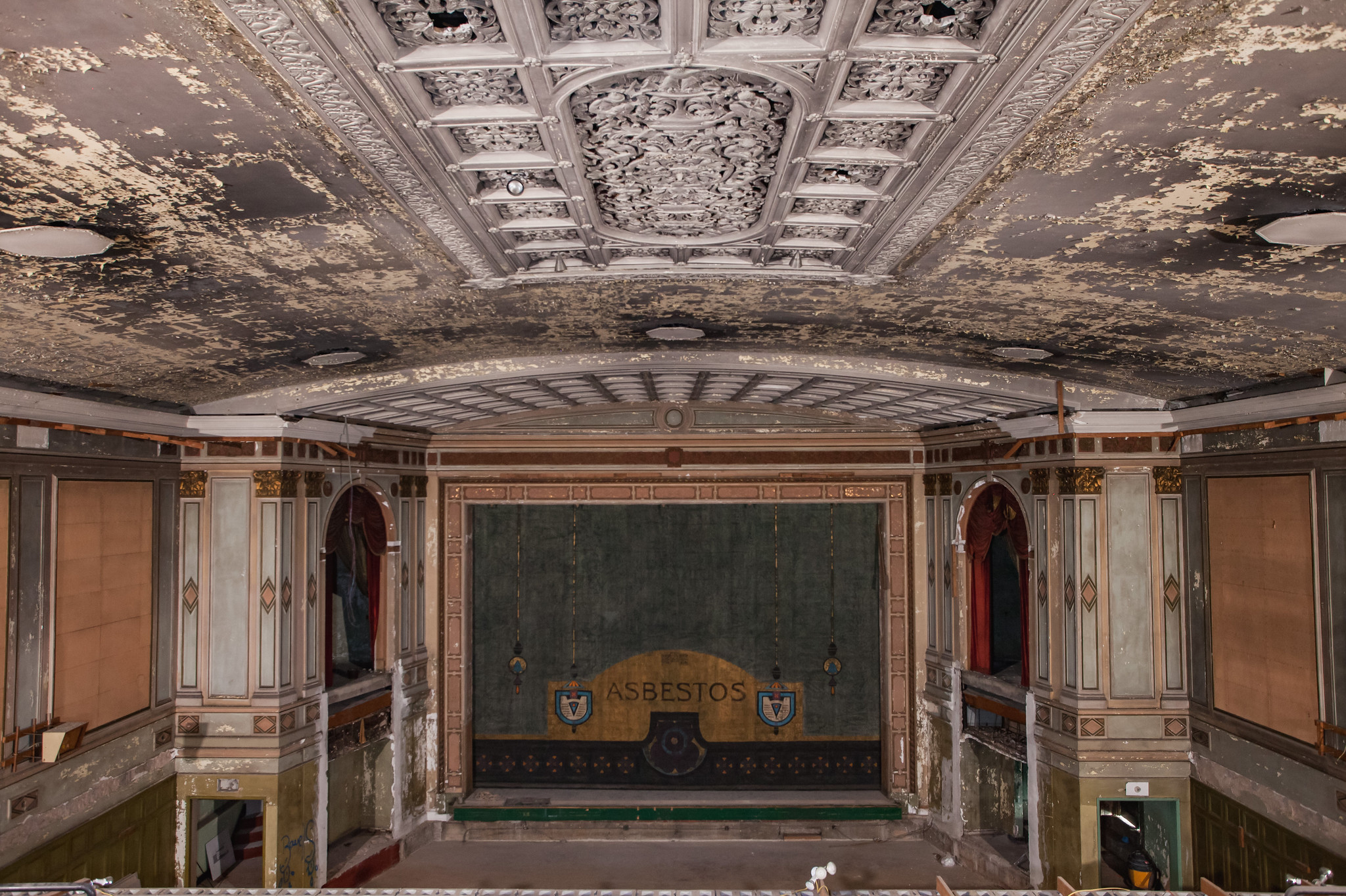Originally constructed as the Montgomery Theatre in 1924, the historic Carolina Theater is incorporated into the 10-story office tower known as the Montgomery Building. Located in Spartanburg, South Carolina, the building was designed by the Boston architectural & engineering firm Lockwood, Greene & Company. The office building and the Montgomery Theatre were named for the Montgomery family. The site of the Montgomery Building was originally the residence of Captain John H. Montgomery, whose family was a textile leader in the South. His three sons – Victor, Walter, and Ben – received the property from the estate of their father and transferred the property’s title to the Montgomery Building, Inc., thus the building was named. The Montgomery Building is an excellent example of a Chicago skeletal frame construction skyscraper and features Italian Renaissance Revival detailing throughout.
At the time, modern office building space was still scarce in Spartanburg and the town was experiencing a new growth era. The Montgomery Building was home to many of the offices for textile companies, cotton brokers, and factories. The building was also home to Spartanburg’s first radio station, WSPA as well as the Montgomery Theatre. The Montgomery Building was the tallest building in the city until the 1950s. Lockwood, Greene & Co. also owned 1/7 of the total shares in the building and was a tenant from 1924 until 1966.
The elaborate Montgomery Theatre opened on October 16, 1925, to very little fanfare. The Montgomery featured an interior box office, chandeliers, and three levels of seating to include over 1,300 seats. The second-story stage boxes look out over a 36-foot wide proscenium stage with a trap door and orchestra pit. The two-story lobby area includes an original wrought iron railing on the second floor and the slightly arched ceiling features an ornate metal grill in the center.
Until the arrival of sound features, the theater offered almost nightly plays, musicals with music by Gershwin, Kern, Friml, and others – as well as frequent performances from Keith Vaudeville from New York. In 1926, the Montgomery installed both Vitaphone and Movietone sound to show the new Vitaphone shorts and newsreels with sound. There was little stir around the venue until 1928 when the Jazz Singer played for a week. Two years later, in 1930, Greta Garbo talked in Anne Christie and a new era had begun. However, throughout the Great Depression years, vaudeville and hour-long revues continued onstage weekly. The theater organ, organ chambers, and associated wiring and air duct lines were incorporated into the design since the theater was intended to be equipped with an organ, but one was never installed. A white grand piano was used in its place.
In 1932, Wilby-Kinsey Theaters took over management and the name was changed to the Carolina Theater. The interior box office was closed and an ornate box office was placed at the Church Street entrance. As the Carolina, it was operated by Paramount’s Publix Theatre chain and once described as “The Finest Theatre in South Carolina.” In February of 1940, the Carolina Theater hosted a week-long engagement of the film Gone with the Wind. The film reached Spartanburg two months after its Atlanta premiere. It was a major event, and Spartanburg High School allowed students to leave early to attend the 2:00 PM matinees. The price of admission was 75 cents.

New seating was added in 1941. In 1956, Elvis Presley performed on stage at the Carolina Theater to a packed house. Not long after, a wide rectangular screen was installed on the stage, putting an end to live performances. Although the Carolina Theater went through another renovation in the 1970s, but was unable to maintain a steady customer base and soon after permanently closed its doors. The theater space has sat abandoned for almost 50 years now. Preservationists, historians, and locals believe the theater could once again be restored and serve as an asset to the city.
The Montgomery Building remained a popular address until the 1980s. As the textile industry floundered, offices were closed and tenants vacated the building. One of the last remaining tenants, WSPA, housed some of its offices and a satellite broadcasting studio in the building until the early 2000s. In 2007, the Montgomery Building was set to be renovated with new office space and housing until the project stalled and the owner defaulted on the loan. Once the building went into foreclosure, the remaining tenants were forced to vacate. Later that year, the property was purchased by Florida-based Cypress Lending for $1.9 million. By 2009, Cypress had consulted with city leaders on what to do with the space and enlisted a developer and a local builder to create drawings. The Montgomery Building and the Carolina Theater were added to the National Register of Historic Places in 2011.
Property records show that BF Spartanburg bought the building from Cypress Lending Group for $680,000. In 2018, the Montgomery Building underwent a $30 million renovation. However, the Carolina Theater was not part of the renovation. Many had hoped the theater would be renovated since it is the only historic movie theater remaining in Spartanburg. Instead, the developers donated the theater space to Preservation South Carolina, a nonprofit group. The group established the Spartanburg Preservation Fund as a revolving preservation fund to identify, purchase, stabilize, maintain, market, and/or sell historic properties in Spartanburg County. The fund is used to pay for easements on the Carolina Theater to protect its historical significance before it is turned over to a new owner.









Thanks for reading. I appreciate your support. Please share the blog with your friends.
You can find me on Facebook, Instagram, Twitter, and TikTok. For more amazing abandoned places, check out my books that are available through Amazon.


I lived in Spartenburg, SC from 1975 until 1982 during the years my two sons were in high school. We bought a home in Boiling Springs, SC and lived there several years. Both my sons Rick Grainger and Steve Grainger graduated from Boiling Springs high school and both went to USCS. My son Steve Grainger graduated from USCS. I was never aware that this theater was in Spartanburg. I hope someone does restore it. It must have been beautiful in it’s day.
LikeLike
I bought a two sided Woden sign that hold movie posters with chasing lights around it I was told it was on the Carolina Theather at on time
LikeLike
I graduated SHS in 1959. Bob Talbot either owned or managed the Carolina Theater. He and his wife, Pearl were good friends of my mom and dad. Their son Bob Jr ended up with the Detroit newspaper as a local happenings commentator. Bob gave dad tickets to a lot of movies which we enjoyed and appreciated.
Great memories!
LikeLike
Please contact me about this theater
Sent via the Samsung Galaxy A71 5G, an AT&T 5G smartphone
Get Outlook for Android
________________________________
LikeLike
I was deleting old emails and stumbled across this about the Carolina theater.
LikeLike
Interesting
LikeLiked by 1 person
Thank you, Sue!
LikeLiked by 1 person
😊
LikeLike
Please contact me at 909 5538617 with info on this theater we were the owners of a Fox theater in CA thanks
LikeLike
Wonderful article. Thanks so much for the memories. In the late ’40s and early ’50s I could ride the Duke Power Co. bus to Main St., walk down Church St. to the Carolina Theatre, enjoy a movie with a soda, and ride the bus back home, all for less than 50 cents! Just sitting in the theatre was a treat it was so lovely.
LikeLike